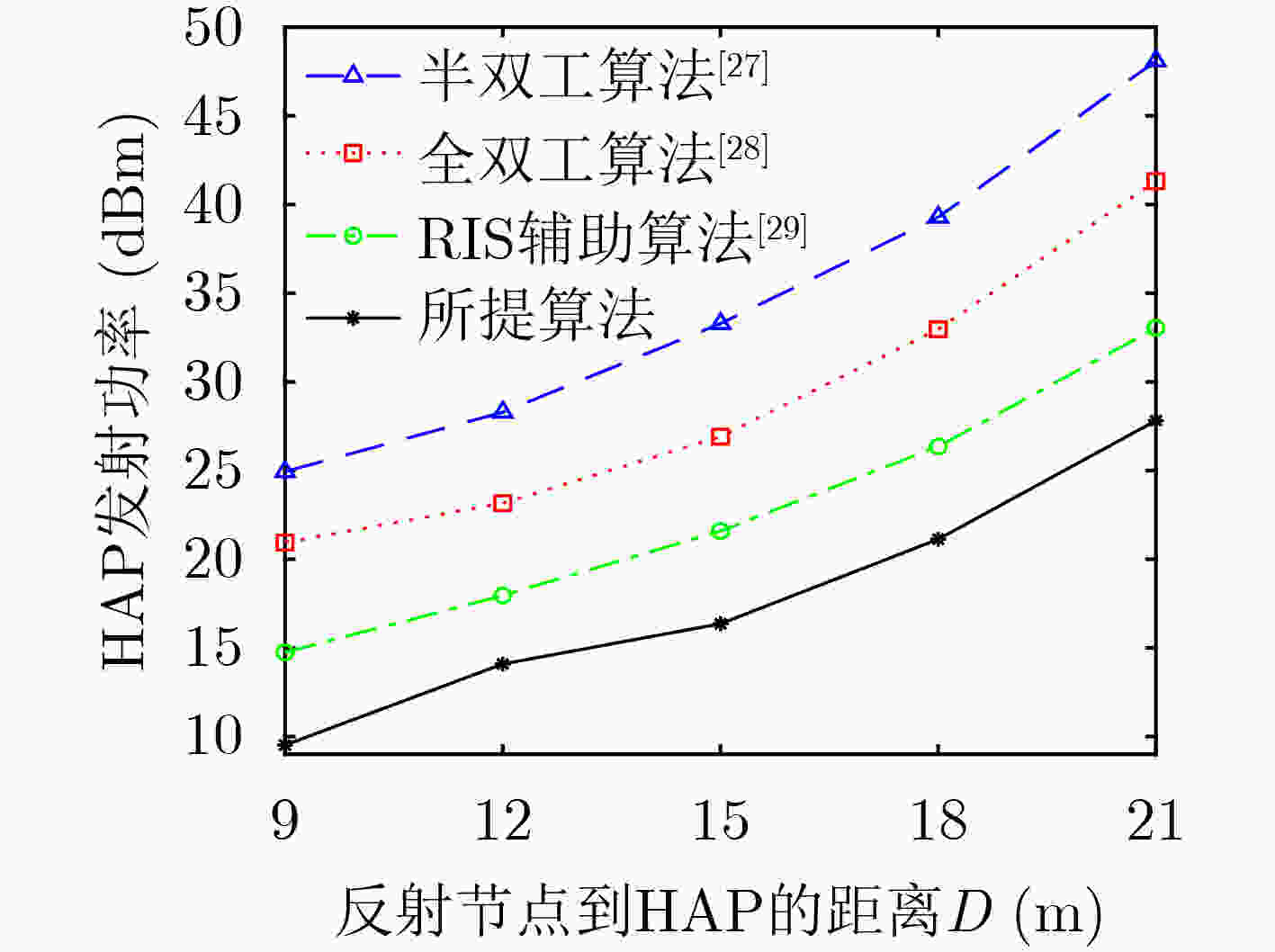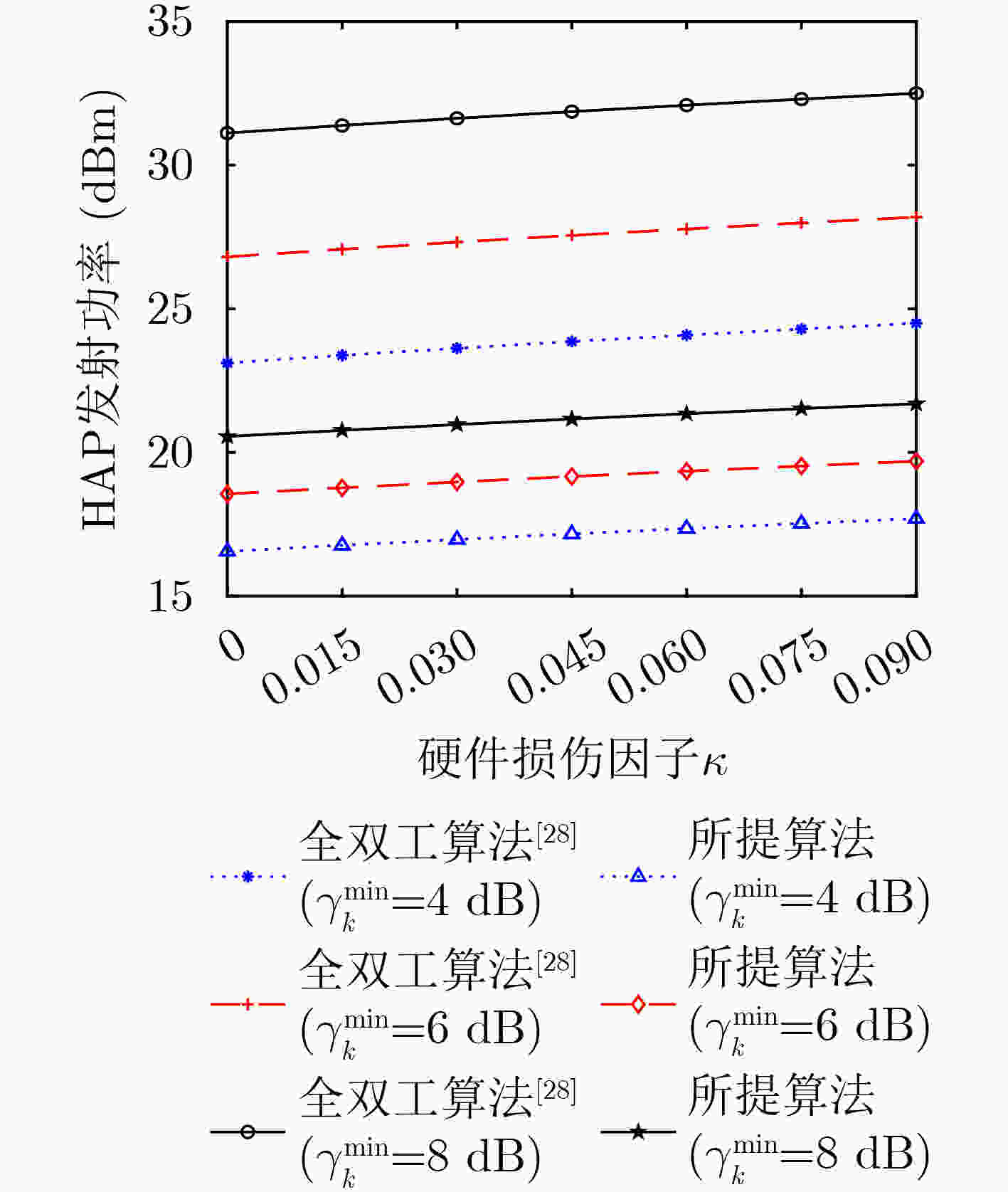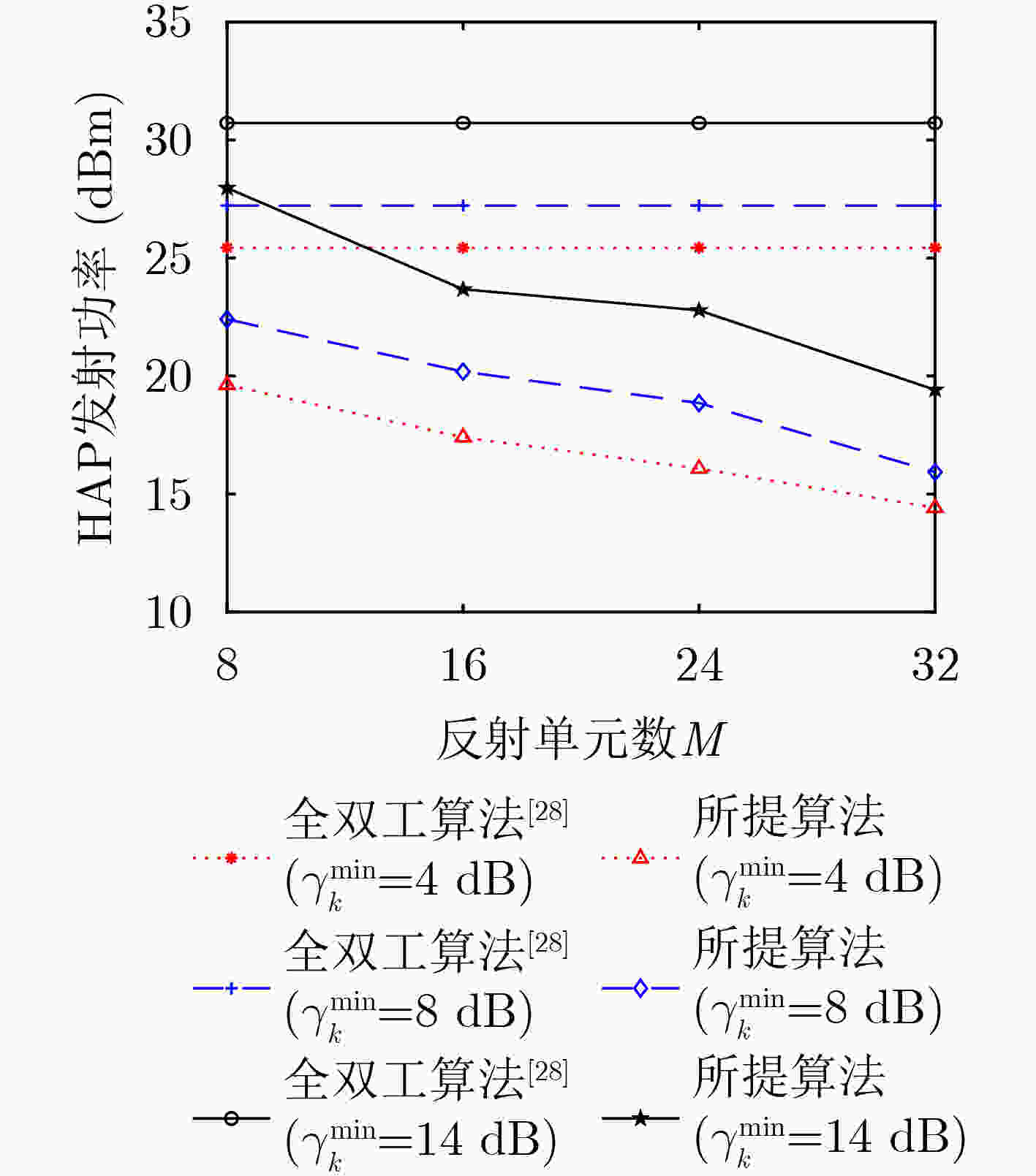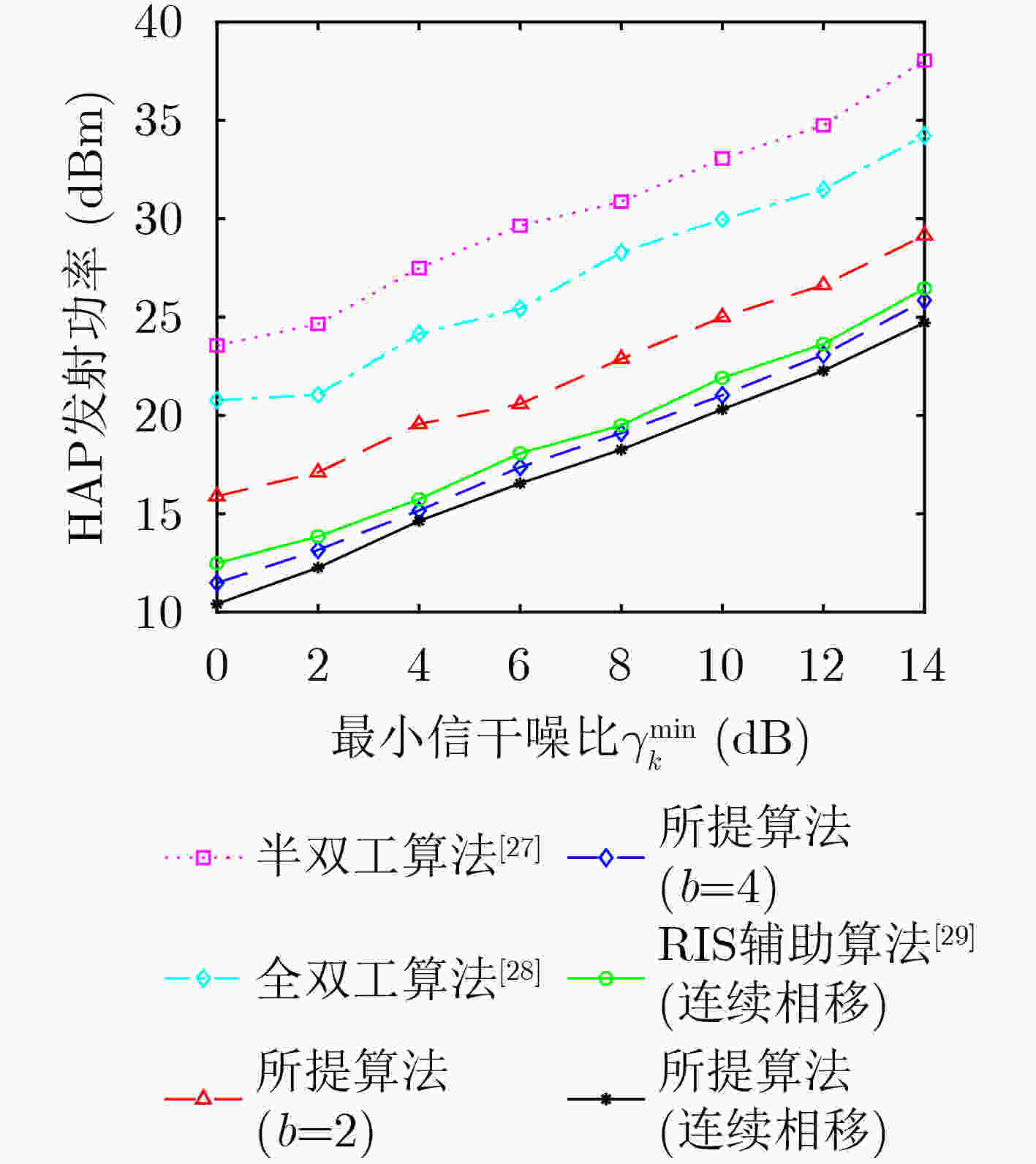| [1] |
MA Dong, LAN Guohao, HASSAN M, et al. Sensing, computing, and communications for energy harvesting IoTs: A survey[J]. IEEE Communications Surveys & Tutorials, 2020, 22(2): 1222–1250. doi: 10.1109/COMST.2019.2962526.
|
| [2] |
LI Xingwang, WANG Qunshu, ZENG Ming, et al. Physical-layer authentication for ambient backscatter-aided NOMA symbiotic systems[J]. IEEE Transactions on Communications, 2023, 71(4): 2288–2303. doi: 10.1109/TCOMM.2023.3245659.
|
| [3] |
XU Yongjun, GUI Guan, GACANIN H, et al. A survey on resource allocation for 5G heterogeneous networks: Current research, future trends, and challenges[J]. IEEE Communications Surveys & Tutorials, 2021, 23(2): 668–695. doi: 10.1109/COMST.2021.3059896.
|
| [4] |
LI Xingwang, ZHENG Yike, KHAN W U, et al. Physical layer security of cognitive ambient backscatter communications for green Internet-of-Things[J]. IEEE Transactions on Green Communications and Networking, 2021, 5(3): 1066–1076. doi: 10.1109/TGCN.2021.3062060.
|
| [5] |
XU Yongjun, XIE Hao, WU Qingqing, et al. Robust max-min energy efficiency for RIS-aided HetNets with distortion noises[J]. IEEE Transactions on Communications, 2022, 70(2): 1457–1471. doi: 10.1109/TCOMM.2022.3141798.
|
| [6] |
徐勇军, 刘子腱, 李国权, 等. 基于NOMA的无线携能D2D通信鲁棒能效优化算法[J]. 电子与信息学报, 2021, 43(5): 1289–1297. doi: 10.11999/JEIT200175.XU Yongjun, LIU Zijian, LI Guoquan, et al. Robust energy efficiency optimization algorithm for NOMA-based D2D communication with simultaneous wireless information and power transfer[J]. Journal of Electronics &Information Technology, 2021, 43(5): 1289–1297. doi: 10.11999/JEIT200175.
|
| [7] |
张晓茜, 徐勇军. 面向零功耗物联网的反向散射通信综述[J]. 通信学报, 2022, 43(11): 199–212. doi: 10.11959/j.issn.1000-436x.2022199.ZHANG Xiaoxi and XU Yongjun. Survey on backscatter communication for zero-power IoT[J]. Journal on Communications, 2022, 43(11): 199–212. doi: 10.11959/j.issn.1000-436x.2022199.
|
| [8] |
CHEN Yunfei. Performance of ambient backscatter systems using reconfigurable intelligent surface[J]. IEEE Communications Letters, 2021, 25(8): 2536–2539. doi: 10.1109/LCOMM.2021.3083110.
|
| [9] |
MA Hui, ZHANG Haijun, ZHANG Ning, et al. Reconfigurable intelligent surface with energy harvesting assisted cooperative ambient backscatter communications[J]. IEEE Wireless Communications Letters, 2022, 11(6): 1283–1287. doi: 10.1109/LWC.2022.3164257.
|
| [10] |
GALAPPATHTHIGE D L, REZAEI F, TELLAMBURA C, et al. RIS-empowered ambient backscatter communication systems[J]. IEEE Wireless Communications Letters, 2023, 12(1): 173–177. doi: 10.1109/LWC.2022.3220158.
|
| [11] |
CHEN Hao, YANG Gang, and LIANG Yingchang. Joint active and passive beamforming for reconfigurable intelligent surface enhanced symbiotic radio system[J]. IEEE Wireless Communications Letters, 2021, 10(5): 1056–1060. doi: 10.1109/LWC.2021.3056874.
|
| [12] |
HU Jinlin, LIANG Yingchang, and PEI Yiyang. Reconfigurable intelligent surface enhanced multi-user MISO symbiotic radio system[J]. IEEE Transactions on Communications, 2021, 69(4): 2359–2371. doi: 10.1109/TCOMM.2020.3047444.
|
| [13] |
ZUO Jiakuo, LIU Yuanwei, YANG Liang, et al. Reconfigurable intelligent surface enhanced NOMA assisted backscatter communication system[J]. IEEE Transactions on Vehicular Technology, 2021, 70(7): 7261–7266. doi: 10.1109/TVT.2021.3087582.
|
| [14] |
LIU Qiang, FU Meixia, LI Wei, et al. RIS-assisted ambient backscatter communication for SAGIN IoT[J]. IEEE Internet of Things Journal, 2023, 10(11): 9375–9384. doi: 10.1109/JIOT.2022.3224587.
|
| [15] |
RAMEZANI P and JAMALIPOUR A. Backscatter-assisted wireless powered communication networks empowered by intelligent reflecting surface[J]. IEEE Transactions on Vehicular Technology, 2021, 70(11): 11908–11922. doi: 10.1109/TVT.2021.3116708.
|
| [16] |
MAO Sun, YANG Kun, HU Jie, et al. Intelligent reflecting surface-aided wireless powered hybrid backscatter-active communication networks[J]. IEEE Transactions on Vehicular Technology, 2023, 72(1): 1383–1388. doi: 10.1109/TVT.2022.3205950.
|
| [17] |
WANG Jinming, XU Sai, HAN Shuai, et al. Multicast secrecy rate maximization for reconfigurable intelligent surface backscatter communication[J]. IEEE Communications Letters, 2022, 26(12): 2855–2859. doi: 10.1109/LCOMM.2022.3208018.
|
| [18] |
LI Xingwang, ZHENG Yike, ZENG Ming, et al. Enhancing secrecy performance for STAR-RIS NOMA networks[J]. IEEE Transactions on Vehicular Technology, 2023, 72(2): 2684–2688. doi: 10.1109/TVT.2022.3213334.
|
| [19] |
WANG Xinyi, FEI Zesong, and WU Qingqing. Integrated sensing and communication for RIS assisted backscatter systems[J]. IEEE Internet of Things Journal, 2023.
|
| [20] |
SHAIKH M H N, BOHARA V A, SRIVASTAVA A, et al. A downlink RIS-aided NOMA system with hardware impairments: Performance characterization and analysis[J]. IEEE Open Journal of Signal Processing, 2022, 3: 288–305. doi: 10.1109/OJSP.2022.3194416.
|
| [21] |
YE Yinghui, SHI Liqin, CHU Xiaoli, et al. Mutualistic cooperative ambient backscatter communications under hardware impairments[J]. IEEE Transactions on Communications, 2022, 70(11): 7656–7668. doi: 10.1109/TCOMM.2022.3201119.
|
| [22] |
XING Zhe, WANG Rui, WU Jun, et al. Achievable rate analysis and phase shift optimization on intelligent reflecting surface with hardware impairments[J]. IEEE Transactions on Wireless Communications, 2021, 20(9): 5514–5530. doi: 10.1109/TWC.2021.3068225.
|
| [23] |
XU Yongjun, XIE Hao, LI Dong, et al. Energy-efficient beamforming for heterogeneous industrial IoT networks with phase and distortion noises[J]. IEEE Transactions on Industrial Informatics, 2022, 18(11): 7423–7434. doi: 10.1109/TII.2022.3158612.
|
| [24] |
ZHOU Hu, KANG Xin, LIANG Yingchang, et al. Cooperative beamforming for reconfigurable intelligent surface-assisted symbiotic radios[J]. IEEE Transactions on Vehicular Technology, 2022, 71(11): 11677–11692. doi: 10.1109/TVT.2022.3190515.
|
| [25] |
ZHOU Gui, PAN Cunhua, REN Hong, et al. A framework of robust transmission design for IRS-aided MISO communications with imperfect cascaded channels[J]. IEEE Transactions on Signal Processing, 2020, 68: 5092–5106. doi: 10.1109/TSP.2020.3019666.
|
| [26] |
BEN-TAL A and NEMIROVSKIAEI A S. Lectures on modern convex optimization: Analysis, algorithms, and engineering applications[M]. Philadelphia, USA: SIAM, 2001: 436-437. doi: 10.1137/1.9780898718829.
|
| [27] |
ZOU Yuze, XU Jing, GONG Shimin, et al. Backscatter-aided hybrid data offloading for wireless powered edge sensor networks[C]. 2019 IEEE Global Communications Conference, Waikoloa, USA, 2019: 1–6.
|
| [28] |
LONG Ruizhe, GUO Huayan, and LIANG Yingchang. Symbiotic radio with full-duplex backscatter devices[C]. 2019 IEEE International Conference on Communications, Shanghai, China, 2019: 1–6.
|
| [29] |
JIA Xiaolun, ZHOU Xiangyun, NIYATO D, et al. Intelligent reflecting surface-assisted bistatic backscatter networks: Joint beamforming and reflection design[J]. IEEE Transactions on Green Communications and Networking, 2022, 6(2): 799–814. doi: 10.1109/TGCN.2021.3127190.
|






 下载:
下载:








